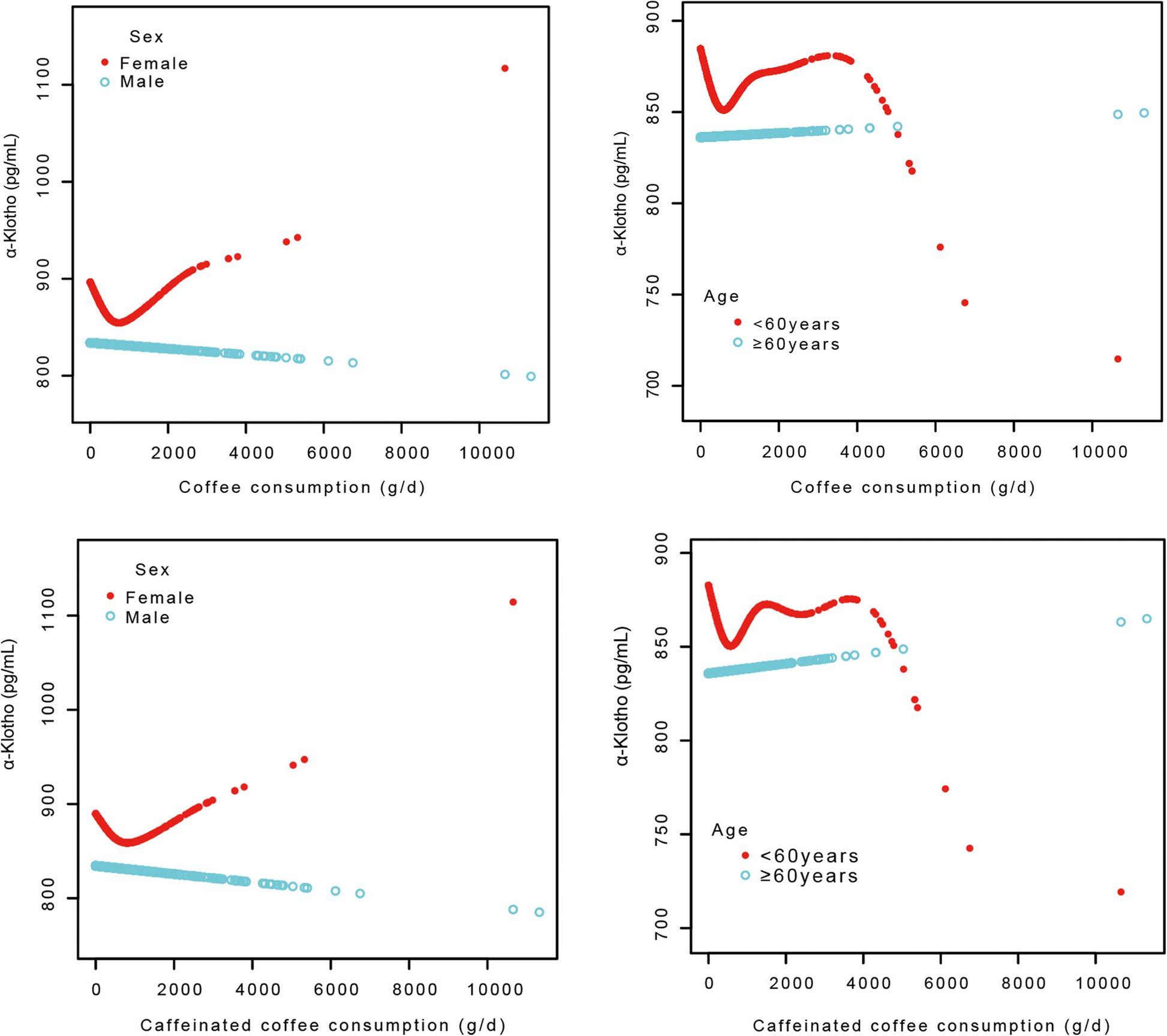Study design and participants
The National Health and Nutrition Examination Survey (NHANES), overseen by the Centers for Disease Control and Prevention, employs a stratified, multistage, probabilistic method to representatively survey the US civilians. This survey assesses their health and nutritional status through household interviews, physical examinations at mobile examination centers, and lab tests performed by certified health professionals. All the procedures were conducted according to the Declaration of Helsinki principles, and the protocol was reviewed and approved by the NHANES Center for Health Statistics Ethics Review Board, with written consent obtained from all participants.
Our research analyzed data from five 2 − year NHANES cycles from 2007 to 2016, focusing on coffee intake (total, caffeinated, and decaffeinated) and SαKl levels. We included 50,588 participants from these cycles, restricting our analysis to those aged 40 − 79 who consented to allow their surplus serum to be used for future studies. Initially, 19,344 participants were eligible; however, exclusions were made for missing α-Klotho data (n = 5,580), incomplete coffee intake data (n = 804), pregnancy (n = 8), cancer (n = 1,536), and other missing covariates like demographic and behavioral factors or disease history (n = 1,531). Additional exclusions were made for females with total energy intakes of less than 500 or more than 5000 kcal/day (n = 53) and males with less than 500 or more than 8000 kcal/day (n = 21), resulting in a final sample of 9,811 participants.
Exposure assessments
We assessed total coffee intake—disaggregated into caffeinated and decaffeinated varieties—and quantified dietary caffeine using the Food and Nutrient Database for Dietary Studies, which was developed by the US Department of Agriculture specifically for dietary research. This database provides details on nutrient composition for a wide array of foods and is frequently employed in analyzing NHANES survey data. From 24-h dietary recall interviews, we extracted data on total coffee, caffeinated coffee, and decaffeinated coffee intake, using information reported on the first day to maximize the inclusion of dietary data. Coffee consumption was precisely calculated using food codes flagged with 921. In our study, the primary exposure variable was the daily total coffee consumption (g/day), and the secondary was caffeinated and decaffeinated coffee consumption (g/day).
Outcomes
According to the NHANES Laboratory/Medical Technologists Procedures Manual [17], SαKl levels were analyzed using samples collected for the NHANES cycles from 2007 to 2016 and processed between 2019 and 2020. These samples were maintained at − 80 °C and assessed with an enzyme-linked immunosorbent assay kit from IBL International, Japan. Each sample was tested twice to ensure accuracy, and the average of these two measurements was used. The kit’s sensitivity was 6.0 pg/mL. On average, SαKl levels were 698.0 pg/mL, with a range of 285.8 to 1638.6 pg/mL [18].
Assessment of covariates
We considered multiple potential confounders in our analysis, including race/ethnicity (classified as Mexican American, other Hispanic, non-Hispanic White, non-Hispanic Black, and Others), body mass index (BMI) (categorized as normal: < 25 kg/m2, overweight: 25 to 30 kg/m2, obese: ≥ 30 kg/m2), the ratio of family income to poverty (PIR) (segmented as < 1.30, 1.30 − 2.99, and ≥ 3.00) [19], education level (classified as less than high school, high school or GED, above high school), and smoking status (defined as never: < 100 cigarettes in lifetime, former: ≥ 100 cigarettes but not currently smoking, current: ≥ 100 cigarettes while currently smoking). Alcohol consumption was categorized based on previously published criteria [20] (categorized as never drinker, former drinker, light-to-moderate drinker, heavy drinker). Total energy intake was sourced from the 24-h dietary recall. Physical activity (PA) levels were categorized as inactive, moderate, or vigorous. Hypertension was identified by a systolic blood pressure value ≥ 140 mmHg, diastolic blood pressure ≥ 90 mmHg, or habitual use of blood pressure medication [21]. A combination of diagnostic criteria and patient history determined COPD. The presence of CVD was identified based on doctor-diagnosed conditions.
Statistical analysis
All statistical analyses were conducted using R software (The R Foundation; version 4.3.2). We set the significance threshold at P < 0.05. To accommodate the survey’s nonresponse and differential sampling, we utilized NHANES survey weights as per the analytical guidelines provided. We assessed baseline characteristics using weighted linear regression for continuous variables and weighted chi-square tests for categorical variables. The results were presented as numbers (weighted percentages) for categorical data and weighted means ± Standard Error (SE) for continuous data. Our multivariate linear regression models explored the relationships between total coffee, caffeinated coffee, decaffeinated coffee intake and SαKl levels. The analysis was structured according to the STROBE guidelines: Model 1 was adjusted for demographic factors (age, sex, and race/ethnicity); Model 2 further included all variables (BMI, marital status, education level, PIR, smoking status, alcohol consumption, physical activity, energy intake, eGFR, hypertension, CVD, and COPD). To assess nonlinear relationships, we used generalized additive models (GAM) and restricted cubic splines (RCS). Based on the smoothing curve, the turning point was calculated through a recursive algorithm, followed by two-piecewise linear regression models. Furthermore, subgroup analyses were conducted to explore variations in the relationship between coffee consumption and SαKl levels across different demographics, including age (≥ 60 years) and sex.
